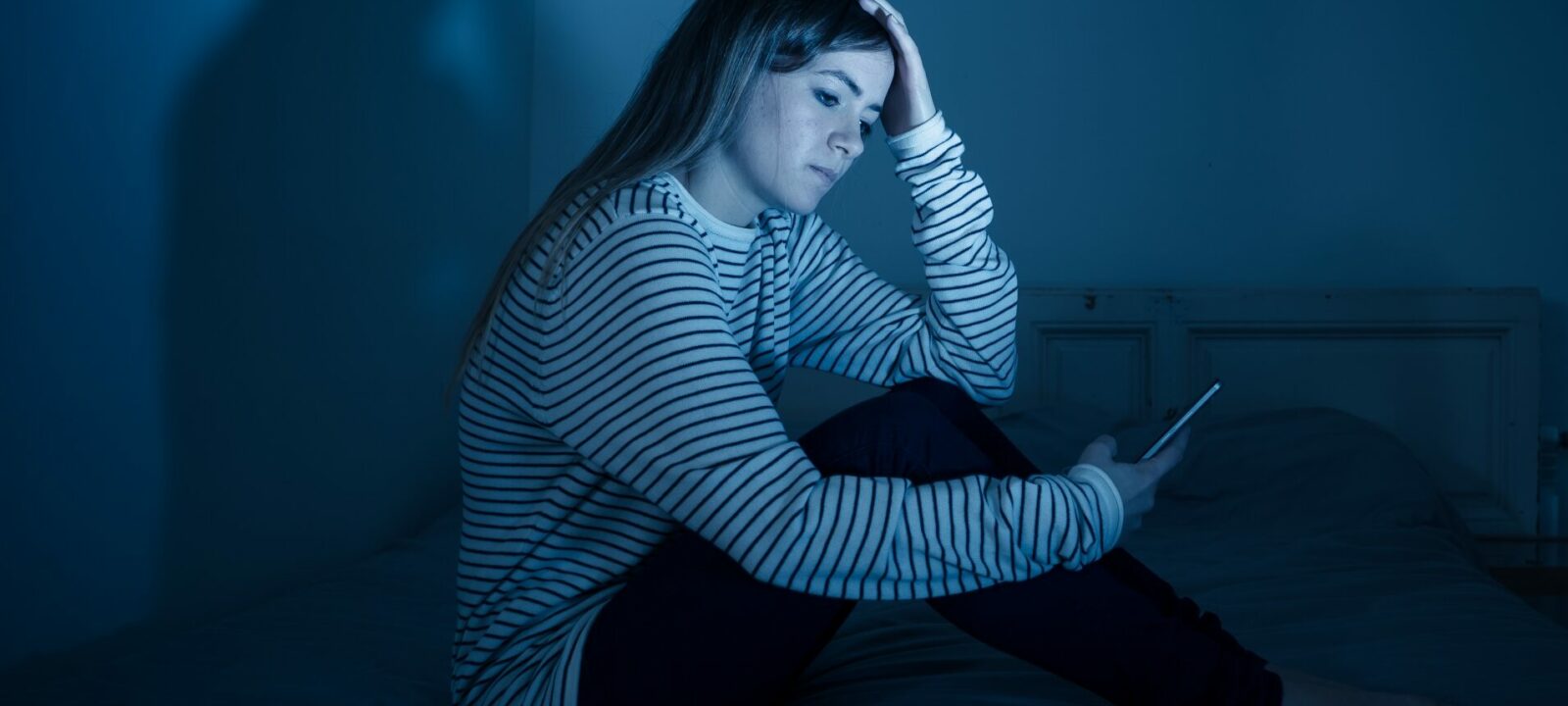Living Online During the Pandemic
Digital health today
Written by Monicah W. Kirathi
At the end of 2019, a new illness, COVID-19 began affecting people on a worldwide scale. On February 27, 2020, the first confirmed case was reported in the Netherlands. As the world changed to adhere to new restrictions, the use of digital technology became one of many cornerstones, providing structure to education and social connectivity. The impact of increased digitization has been detrimental on the mental and physical health of many teenagers facing this new (temporary) normal. The Dutch news source ‘NL times’ , reports an increase in young people seeking help and mental health services. Now more than ever, screens run our lives. What is the extent of these effects and what can be done about it?
Current state of mind
Battles of depression, anxiety, and insecurity in relation to increased digitization have been widely reported in the past decades. Since the COVID-19 crisis however, there has been an accelerated adoption of digital technologies and an accelerated decline in mental well-being as well. The Dutch Association of Mental Health and Addiction Care surveyed 20 large mental health institutions in the Netherlands, and they found an “increase of between 30%-60% in requests for crisis aid … for children and young people”. This was done in December 2020 and compared to pre-pandemic 2018.

Digital technology use among teenagers Image by freetensyouth.org
Similarly, in an online survey that we personally conducted in February last month, Dutch teenagers (16–17 years-old) reported spending up to more than 6 hours a day online, in addition to online education. They further expressed a decrease in self-confidence, concentration, and increased stress. Some also expressed physical concerns ranging from sleep deprivation to headaches and eye problems.
Loes Keijsers a professor of social and behavioral sciences at Erasmus University in Rotterdam also says that, “In 2018, the majority of Dutch youth (aged 10-25 ) rated their life-satisfaction a 7.5 out of 10, with only 6% scoring below a five.” When Compared To January and February 2021 , “only 19% gave themselves a 7.5 or higher, while a whopping 33% scored below a five. “It’s a five-fold increase!”
What are the consequences ?
It is clear that there has been a detrimental impact in teenagers, but Dr. Ruut Veenhoven, sociologist at Erasmus University Rotterdam clarifies that the true extent of the impact caused specifically by the pandemic cannot be known at this moment. This is because not enough (long-term) research data are available yet. He does however encourage the public to ask their friends and family members how they feel. “ The best way to quantify how a person feels is to communicate to them”, he emphasizes.
In his opinion, keeping a diary to record physical activities and emotions is beneficial, most especially now. It can sometimes be difficult for teens to recognize psychological distress within themselves, so this can be a useful way of tracking your level of happiness.
Possible alternative to traditional therapy
In the meantime, researchers and therapists have tried to come up with new methods of providing therapy and assistance to those that need it. Now that one-on-one mental health care is more difficult to reach, new methods of digital therapeutics are being implemented to meet the current global and regional needs. What does this next generation of mental health care look like?
One institution at the forefront of providing internet-enabled therapy is Ieso Digital Health Center , based in Cambridge UK. Their research provides a new way of offering highly personalized counseling and therapy, remotely.
Using more than 200,000 hours of pre-existing 1: 1 sessions, they trained and developed a new technology that understands the contents and language used during a therapy session. This technology is now used to inform more accurate interventions and improve the care given to patients since 2020. The process is called deep learning or deep neural networks. The artificial intelligence (AI) used learns and improves itself to give better results, much like the human brain. It is the same technology used by google translate to read text in one language and automatically re-code it into a different language, say Dutch to English.
While the patient speaks to the therapist online, the computer uses the language expressed during therapy by both the patient and clinician and translates it into a simple therapy barcode or fingerprint that can be readily analyzed. The AI examines what aspects of psychotherapy will be most effective for the given patient and suggests an intervention based on previous intervention-outcome associations.

The colors on the barcode are representative of different types of dialogs that are taking place moment by moment, as interpreted by the AI. The computer detects the greeting at the beginning (yellow), followed by the chitchat (green) and non-therapeutic language (purple), and then it detects when the therapist starts to use structured clinical language and therapeutic techniques (pink). https://www.8bminds.com/#science
After each session, the patient reports the frequency of their symptoms using questionnaire-based rating scales, and this allows the therapists to study the exact events of the therapy session, improve care, and relate it to subsequent improvement in symptoms. All this is done online, removing the barrier that travel restrictions and social distancing has been to mental healthcare, and allowing for personalized psychological therapy on a global scale.
To conclude, teenagers are going through a period where essential physical interaction and socialization is limited (or replaced by digital technology use), which is attributed to decreased mental health. Ironically, digital technology has also been used to mitigate the situation and allow provision of mental healthcare if or when needed at a distance .
References
Survey of Dutch high school students (n = 22) conducted through a questionnaire made with Google Forms
Interview with an expert: Dr. Ruut Veenhoven sociologist at Erasmus University Rotterdam, working on the scientific study of happiness
Chen, L., Xia, C., & Sun, H. (2020). Recent advances of deep learning in psychiatric disorders. Precision Clinical Medicine , 3 (3), 202-213. doi.org/10.1093/pcmedi/pbaa029
De ‘, R., Pandey, N., & Pal, A. (2020). Impact of digital surge during Covid-19 pandemic: A viewpoint on research and practice. International Journal Of Information Management , 55, 102171. doi.org/10.1016/j.ijinfomgt.2020.102171
Eight Billion Minds. (2021). Retrieved 11 March 2021, from www.8bminds.com/
Haidt, J., & Allen, N. (2020). Scrutinizing the effects of digital technology on mental health . Nature , 578 (7794), 226-227. doi.org/10.1038/d41586-020-00296-x
Keijsers , L. & Bülow, A. (2020). Growing up in times of COVID-19: When a window of opportunity is temporarily closed. In E. Aarts , H. Fleuren , M. Sitskoorn , T. Wilthagen (eds), The New Common: Coping with Corona in Everyday Life. www.researchgate.net/publication/344378730
Massive increase in young people seeking help for suicidal thoughts, eating disorders. NL Times. (2021). Retrieved 11 March 2021, from nltimes.nl/2020/12/23/
Pan, K., Kok, A., Eartikelenboom, M., Horsfall, M., Jörg, F., & Luteijn, R. et al. (2021). The mental health impact of the COVID-19 pandemic on people with and without depressive, anxiety, or obsessive-compulsive disorders: a longitudinal study of three Dutch case-control cohorts. The Lancet Psychiatry , 8 (2), 121-129. doi.org/10.1016/S2215-0366(20)30491-0

